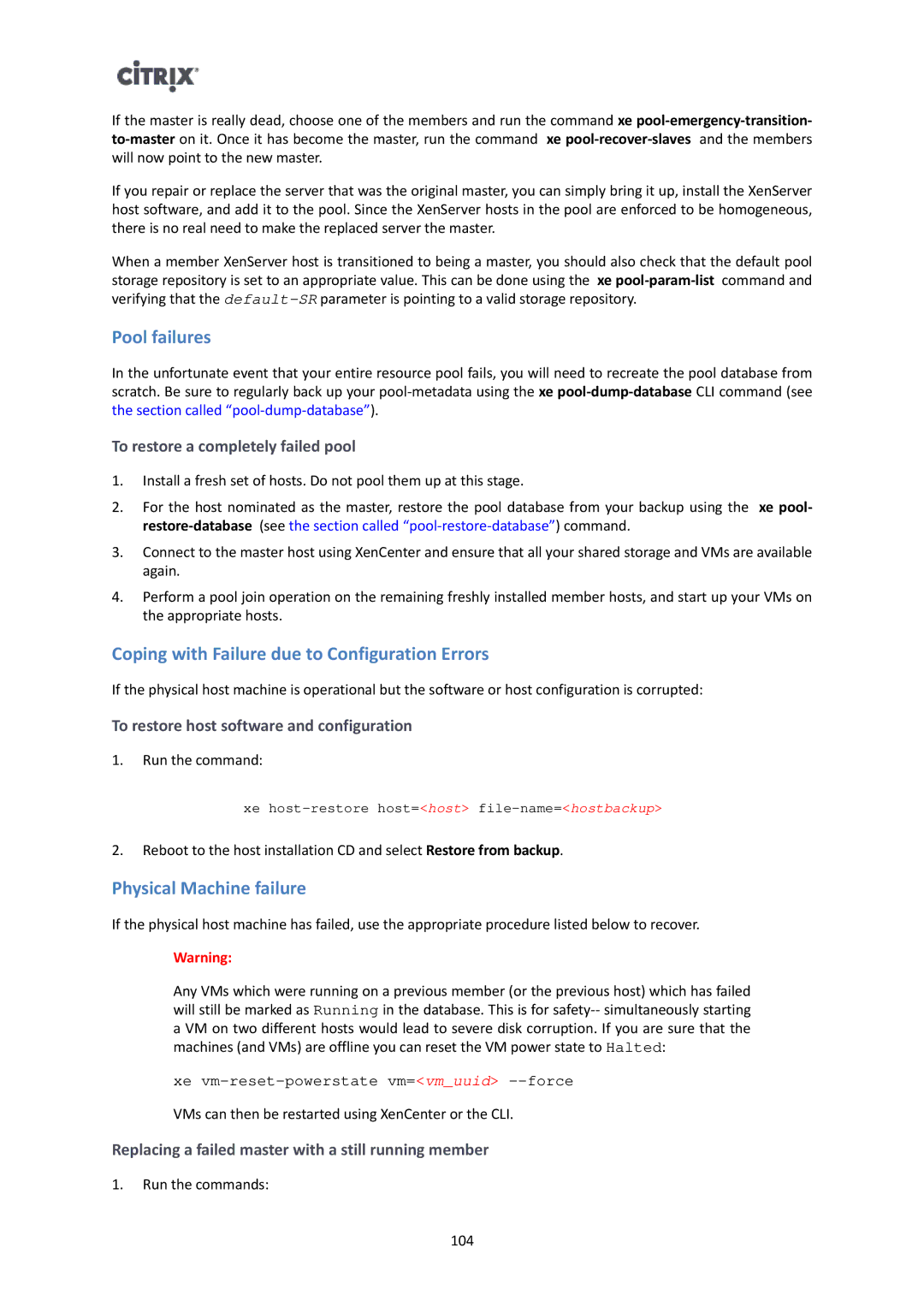If the master is really dead, choose one of the members and run the command xe
If you repair or replace the server that was the original master, you can simply bring it up, install the XenServer host software, and add it to the pool. Since the XenServer hosts in the pool are enforced to be homogeneous, there is no real need to make the replaced server the master.
When a member XenServer host is transitioned to being a master, you should also check that the default pool storage repository is set to an appropriate value. This can be done using the xe
Pool failures
In the unfortunate event that your entire resource pool fails, you will need to recreate the pool database from scratch. Be sure to regularly back up your
To restore a completely failed pool
1.Install a fresh set of hosts. Do not pool them up at this stage.
2.For the host nominated as the master, restore the pool database from your backup using the xe pool-
3.Connect to the master host using XenCenter and ensure that all your shared storage and VMs are available again.
4.Perform a pool join operation on the remaining freshly installed member hosts, and start up your VMs on the appropriate hosts.
Coping with Failure due to Configuration Errors
If the physical host machine is operational but the software or host configuration is corrupted:
To restore host software and configuration
1.Run the command:
xe
2.Reboot to the host installation CD and select Restore from backup.
Physical Machine failure
If the physical host machine has failed, use the appropriate procedure listed below to recover.
Warning:
Any VMs which were running on a previous member (or the previous host) which has failed will still be marked as Running in the database. This is for
xe
VMs can then be restarted using XenCenter or the CLI.
Replacing a failed master with a still running member
1.Run the commands:
104
